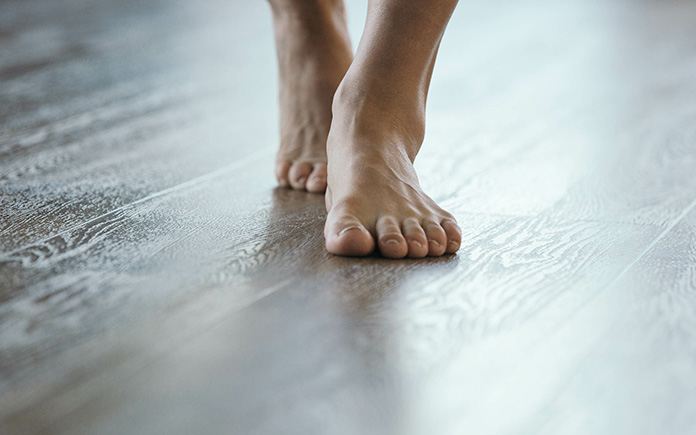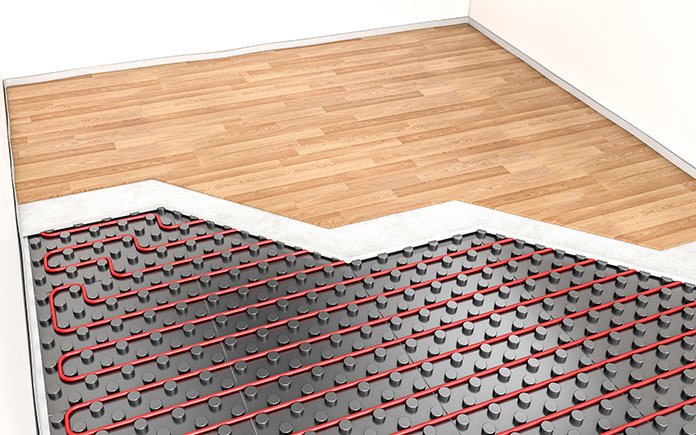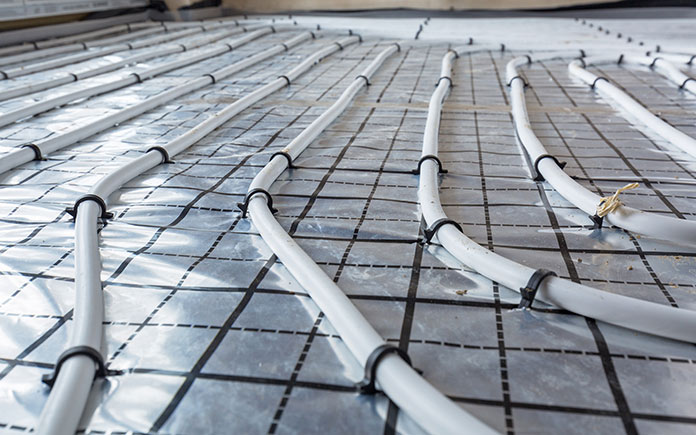
There are all kinds of ways to keep your home heated from the ceiling to the floors — here are a few examples:
• A forced-air furnace, powered by natural gas or propane, pulls in cold air and filters allergens like dust and pollen. The furnace’s heat source warms the air, which a blower distributes through ducts.
• Electric heat pumps pull heat from one place — the air or ground — and move it throughout the home. Unlike furnaces, which burn fuel to create heat, heat pumps simply transfer it.
• Boilers, powered by electricity, gas or oil, heat water until it boils, hence the name. The water transforms into steam and then distributes heat through pipes and radiators.
• Wood-burning fireplaces generate a draft of heated gas that attracts more hot air as fire rises. Smoke goes up the chimney and exits the flue, which draws in oxygen to keep the fire burning.
• Gas fireplaces have artificial, incombustible logs that hide vents. Flames burn behind closed doors, there’s no smoke, and gases exhaust through tubes in the wall.
• Baseboard heating systems, powered by electricity, pull cold air through a vent, warm it with heated metal fins and send warm air into the room.
• Space heaters, powered by electricity, are a portable heating source. They pull air in from a room, warm it and then push it out.
• Heated floors pipe hot water through a closed loop of flexible PEX tubes or send heat through electrical coils. This radiant system heats the floor, the furniture and you.
And this is the type of heating source we’re going to focus on.



Heated Floors: Efficient Comfort
Radiant heating directly transfers warmth from a hot surface to people and objects through infrared radiation.
If this is hard to imagine, Energy Saver gives a great example of the process: “Radiant heating is the effect … when you can feel the warmth of a hot stovetop element from across the room.”
You can install a radiant heating system under floors, above ceilings or behind walls. A dedicated water heater or boiler pumps hot water through tubes in the floor, slab or wallboard. And a pattern of hydronic tubes evenly distributes the heat.
Heat rises, so naturally heated floors are the best radiant heating option. They warm your feet and allow you to lower the thermostat 2 to 4 degrees. This means you’ll use less energy but gain comfort.
While hydronic and electric systems are in common use, geothermal, solar and propane versions also are available.
In fact, one benefit of radiant heating is how flexible it is when it comes to the actual power source. Because the system operates independently, you can change that source as power trends and availability change.



The Cost of Heated Floors
Whether you’re converting to heated floors or want to supplement a forced-air system, there is some initial — and significant — cost.
Installing whole-house radiant hydronic heating could cost between $ 14,000 and $ 48,000, according to Home Advisor. Installing an electric coil system would range from $ 19 to $ 36,000.
Heating individual rooms costs much less — about $ 6 to $ 20 per square foot for the hydronic system; $ 8 to $ 15 per square foot for the electric version, according to Home Advisor.
In a typical room, that could just set you back $ 1,785 to $ 5,861, which may be a more manageable investment in comfort, especially if you just want heated floors in one or two rooms.
You’ll still need to factor in the cost of using the system, and that’s an estimated $ 1 to $ 5 per day, according to Home Advisor.
Of course, costs vary based on a number of factors, including your location and the market. Always call around for quotes, ask for personal referrals and compare notes.
Then choose a professional who is licensed and bonded before hiring them to install your heated floors.




